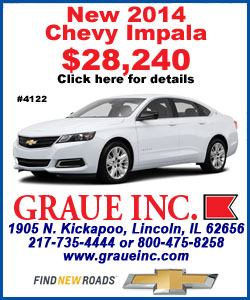|
 February's sales fell less than 300 vehicles from last year's
1,193,872 light cars and trucks. While General Motors Co <GM.N>,
Ford Motor Co <F.N> and Chrysler Group all reported
stronger-than-expected sales, the higher incentives raised concerns
about industry profitability in the future. February's sales fell less than 300 vehicles from last year's
1,193,872 light cars and trucks. While General Motors Co <GM.N>,
Ford Motor Co <F.N> and Chrysler Group all reported
stronger-than-expected sales, the higher incentives raised concerns
about industry profitability in the future.
The annualized sales rate for the month finished at 15.34 million
vehicles, just short of the 15.4 million expected by analysts polled
by Reuters. It was the third month in a row that U.S. auto industry
sales were weaker than expected.
The frost on sales for January and February will thaw in March as
temperatures rise and customers return to showrooms in greater
numbers, some industry analysts said.
However, late February's high customer incentives, the discounts to
encourage buyers to visit showrooms, will carry over into March,
cutting in to companies' profit, several analysts said.
Larry Dominique, executive vice president of industry research firm
TrueCar, said there are about 80 days of supply on dealer lots,
compared with a more desirable level of 60 to 65 days.

"We have on average two-and-a-half months of supply on dealer lots,"
said Dominique, adding that most automakers have not cut production,
which will lead to even more oversupply, which will increase
pressure to raise incentive levels further.
Dominique pointed out that companies book the sales for their
balance sheets on the wholesale level, so "every field agent for
every manufacturer" is going to press dealers to take more vehicles
when they are already oversupplied.
Monthly auto sales are typically an early indicator of consumer
demand. But January and February are usually two of the slowest
sales months every year.
OLD HABITS DIE HARD?
"The fear is going back to the old ways of having to sell the deal
and not the car after years of staying clean," said Jesse Toprak,
chief analyst for research firm Cars.com. "(Dealers) don't want the
companies to fall off the wagon when it comes to incentives."
For now, the incentives are not out of control, but Toprak warned,
"it might get a bit out of control this summer and beyond if the
pace of inventory accumulation does not slow down."
Industrywide, the average incentive in February was about $2,633 per
vehicle, up 5 percent from a year earlier and up 3.3 percent from
January, according to TrueCar.
Partly offsetting the higher incentives was a 3.6 percent rise in
average transaction prices, or the figures at which autos are sold.
Unlike January and February, March is often one of the best months
for U.S. auto sales. The fact that March has five weekends also
bodes well for the U.S. auto industry, said John Felice, Ford's U.S.
sales chief.
"Despite all the challenges, it was a robust market," Felice said of
February, "and we feel that as we head into March we'll be in very
good shape."
SILVERADO SLIDES
GM's U.S. sales in February dipped 1 percent but easily beat
analysts' expectations of a 6 percent slide, with sales of 222,104
vehicles.
While GM's Malibu, Cruze and Sonic passenger cars each posted
double-digit gains, sales of the company's top-selling Chevy
Silverado pickup truck fell 12 percent. The Silverado's slide
compares with a rise of 2.6 percent for Ford's F-Series pickups and
a gain of 26 percent for Chrysler's Ram 1500 pickup.
[to top of second column] |

GM officials said they trimmed incentives on their trucks from
January even as their rivals boosted them. However, Kelley Blue Book
analyst Alec Gutierrez said the problem was that GM's new trucks
were not enough of a departure from their rivals' current models to
make a huge difference.
"They are only marginally better than Ford's previous generation
truck and the new Ram," he said, referring to the Silverado. He
added that there was nothing to suggest a consumer should pay a
premium for the Silverado.
In a research note last week, Barclays analyst Brian Johnson said
intense competition in the segment has left GM with the "least
successful large pickup truck launch over the last 15 years in terms
of share and pricing." While the Detroit company has been able to
raise prices, it has cut incentives more slowly than with full-size
truck launches in the past.
FORD SLIGHTLY BEATS, TOYOTA MISSES
Ford slightly beat expectations last month by posting U.S. sales of
183,947 vehicles, down 6 percent from a year earlier. Ford is the
second-largest in the U.S. market by sales.
GM and Ford, which ranks second in the U.S. market, are offering
some of the heftiest incentives.
Toyota Motor Corp <7203.T>, the No. 3 seller in the U.S. auto
market, saw February sales fall 4 percent at 154,866 vehicles,
widely missing expectations of no change from a year ago. Honda
Motor Co <7267.T> reported a 7 percent sales decline that also
missed analysts' estimates.
U.S. February sales of Chrysler Group and Nissan Motor Co <7201.T>
topped analysts' expectations.
Chrysler, a unit of Fiat Chrysler Automobiles <FIA.MI>, said demand
for its two top-selling Jeep models, the Grand Cherokee and the
Cherokee SUVs, had helped push its total monthly sales up 11 percent
to 154,866 vehicles. Analysts had expected a rise of 8 percent.

Nissan showed a gain of 16 percent, led by a 73 percent jump in
sales of its Rogue crossover vehicle. Analysts had expected an
increase of 12 percent.
Volkswagen AG <VOWG_p.DE> reported U.S. sales of 27,112, down 14
percent. Its best-selling vehicle, the Jetta, had sales of 11,908,
down 0.5 percent.
GM shares were down 0.1 percent at $36.15 and Ford shares were down
1.2 percent at $15.20 in late afternoon trading on the
New York Stock Exchange.
(Editing by Lisa Von Ahn and Matthew
Lewis)
[© 2014 Thomson Reuters. All rights
reserved.] Copyright 2014 Reuters. All rights reserved. This material may not be published,
broadcast, rewritten or redistributed. |